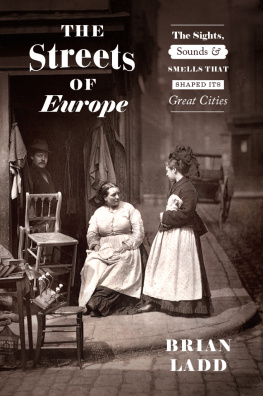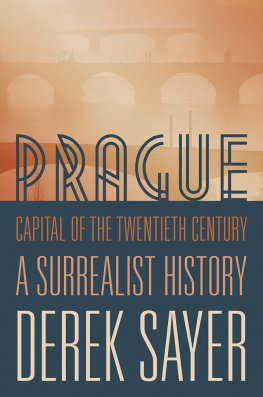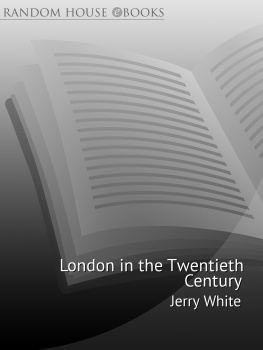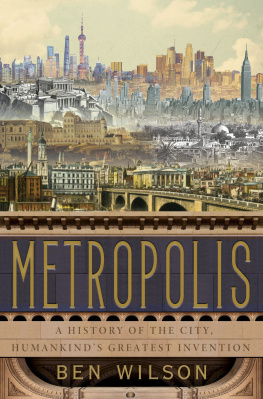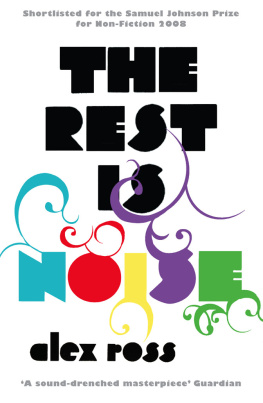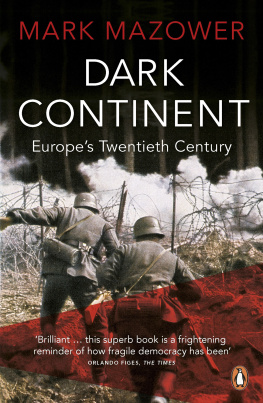Streetlife
Streetlife
The Untold History of Europes Twentieth Century
LEIF JERRAM


Great Clarendon Street, Oxford OX2 6DP
Oxford University Press is a department of the University of Oxford.
It furthers the Universitys objective of excellence in research, scholarship,
and education by publishing worldwide in
Oxford New York
Auckland Cape Town Dar es Salaam Hong Kong Karachi
Kuala Lumpur Madrid Melbourne Mexico City Nairobi
New Delhi Shanghai Taipei Toronto
With offices in
Argentina Austria Brazil Chile Czech Republic France Greece
Guatemala Hungary Italy Japan Poland Portugal Singapore
South Korea Switzerland Thailand Turkey Ukraine Vietnam
Oxford is a registered trade mark of Oxford University Press
in the UK and in certain other countries
Published in the United States
by Oxford University Press Inc., New York
Leif Jerram 2011
The moral rights of the author have been asserted
Database right Oxford University Press (maker)
First published 2011
All rights reserved. No part of this publication may be reproduced,
stored in a retrieval system, or transmitted, in any form or by any means, without the prior permission in writing of Oxford University Press,
or as expressly permitted by law, or under terms agreed with the appropriate reprographics rights organization. Enquiries concerning reproduction outside the scope of the above should be sent to the Rights Department, Oxford University Press, at the address above
You must not circulate this book in any other binding or cover
and you must impose the same condition on any acquirer
British Library Cataloguing in Publication Data
Data available
Library of Congress Cataloging in Publication Data
Data available
Typeset by SPI Publisher Services, Pondicherry, India
Printed in Great Britain
on acid-free paper by
Clays Ltd., St Ives plc
ISBN: 978-0-19-280707-6
1 3 5 7 9 10 8 6 4 2
Acknowledgements
It is a clich, but true nonetheless, that the number of people who built this project with me are too numerous to name, and the ones that dont get named often helped most of all.
But for helping conceive of the project, Katherine Reeve and Richard Evans earn my sincere thanks; Richard has supported me throughout my career. And in helping with the delivery, Matthew Cotton and Luciana OFlaherty were patient, supportive, tactful, and wise. Peter Fisher helped more than he might realize. Dino Soteriou kept me saner than I otherwise would have been for much of it. My mum has always kept the faith, but with a healthy scepticism; our cities have too many conspicuous citizens whose mums do not. It really makes the difference.
Patient and helpful readers wound me back in from saying unwise things, or wise things (if there are any in here) badly. Many were former students, like James Greenhalgh and Mathew Wintercross; some were friends and family, like Sarah Gaskell, Bruno Auer, and my sister, Georgia; others were colleagues, like Selina Todd and Simon Gunn. Simon, in particular, has never flagged in his enthusiastic support for everything Ive ever triedI am not alone in wishing to offer him thanks. Many of my colleagues would join me. Academics thank too little, and squabble too much. It is a symptom, perhaps, of so little being at stake in so many of our debates. By contrast, Simon is generous to all he meets.
Finally, huge thanks go to my students at the Universities of Manchester and Keele. Their enthusiastic commitment to my courses, and the insightful primary research of their own, taught me so much. For all the times they said, Why? or That doesnt add up or What on earth are you talking about? or I dont get it or How do you know?, I thank them. Without them, I wouldnt even try to do the job, let alone be able to.
Leif Jerram
Manchester, 2011
Contents
List of Figures
Introduction
The Untold History of Europes Twentieth Century
There is a familiar history of the twentieth centuryalmost comforting in its familiarity, despite its triumphs, drama and tragedy. There is a well-known history of great individualsAdenauer and Lloyd George, Curie and Pankhurst, Clemenceau and Gorbachev, Stalin and Hitler, Franco and Mussolini. And there is a history of the great movements of nameless individuals, invisibly harnessed to some profound evolving truth: the rise of democracy, of women, of rationalism, of capitalism, of socialism, or of secularization; or the fall of communism, child mortality, or of empires.
But the real drama of history happens where the two worlds collide where the nameless individual in the crowd meets the great man (or woman). What did the tsar care what the workers of No 6 Shop, Trubochnyi Metal Works in St Petersburg thought? Not much, perhaps. But he would certainly come to care, when they went on strike in 1916 and 1917, destroyed his world, and transformed global politics for our times. As for the people dancing wildly to black jazz in the cellars of wartime Hamburg and Berlin, what did they care about the racial policies of Hitler, Goering, and Heydrich being decided in Berlin in the summer and autumn of 1941? A great deal, it would seem, for dancing to black music in a racist state was a clear rejection of a certain set of ideasa rejection expressed in the movements of their bodies and the smiles on their faces, but not in the ballot box. We need to tell a different story of a messy continent in a messy century. We have to give up our familiar tidy frameworks and neat narratives. If we want to find the point of encounter, and witness the rendezvous between big and small, we have to start thinking about where the twentieth century happened. We have to look at its streetlife.
If we want to find the scene of the crime of the continents history in the twentieth century, we have to think wisely about where we put our hide, and how we manage the stakeout. The best place to observe the encounter between big and small is the city, and the myriad nooks and crannies, back streets and thoroughfares, clubs and bars, living rooms and factories that made them up. Cities matter, because in the nineteenth century, mankind entered a period of transformation perhaps only equalled in significance by the transformation wrought when, 10,000 years ago, humans stopped wandering and settled down to farm. Beginning in Britain and Belgium in the 1830s, people began to move to cities in their thousands, then their hundreds of thousands, and then their millions. By the end of the nineteenth century, this revolution was starting to transform large chunks of what we call the West: the north and east of France; all of Belgium and the Netherlands; northern Italy; the west of the Habsburg Empire in present-day eastern Austria, the Czech Republic, parts of Hungary, and southern Poland; much of Germany; a corridor between St Petersburg and Moscow; chunks of northern Spain; and much of the north-east of the USA. In the following one hundred years, these cities, these islands in rural seas, came to dominate every aspect of human experience in the West, from the ways we think to the ways we love, from the lives of women to the ways we organize our politics, such that by 1970, the village was the exception, and the city the rule. This book tells the story of Europes twentieth century from the point of view of the street corners, bars, factories, squares and living rooms in which it happened.
Next page


